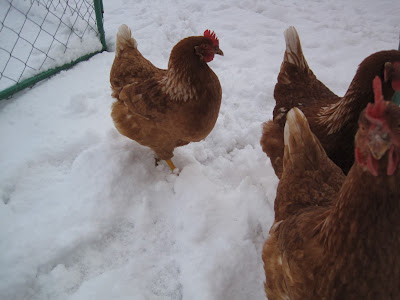The kitchen is full of pumpkins, the wood-stoves are all working hard, and the wet wet rainy garden is decidedly unenticing - the signs are all there that summer is over.
Pumpkin & squash grow easily and well around here, but it's sometimes hard to get excited about eating pumpkin day after day - not to mention the effects on one's digestion. We grew enough pumpkins ourselves, but then a neighbour gave us two more and they sat on the kitchen table looking menacing until last night when I got going with pumpkin strategic planning. All the recipes asked for canned pumpkin, so the first one was cut up last night & left cooking in the cooling oven overnight. We had pumpkin muffins with honey for breakfast, pumpkin cake with teatime, and it's pumpkin, lentil & orange soup for supper.
And there are 2 more still waiting to be processed...
CT
Pumpkin & squash grow easily and well around here, but it's sometimes hard to get excited about eating pumpkin day after day - not to mention the effects on one's digestion. We grew enough pumpkins ourselves, but then a neighbour gave us two more and they sat on the kitchen table looking menacing until last night when I got going with pumpkin strategic planning. All the recipes asked for canned pumpkin, so the first one was cut up last night & left cooking in the cooling oven overnight. We had pumpkin muffins with honey for breakfast, pumpkin cake with teatime, and it's pumpkin, lentil & orange soup for supper.
And there are 2 more still waiting to be processed...
CT








